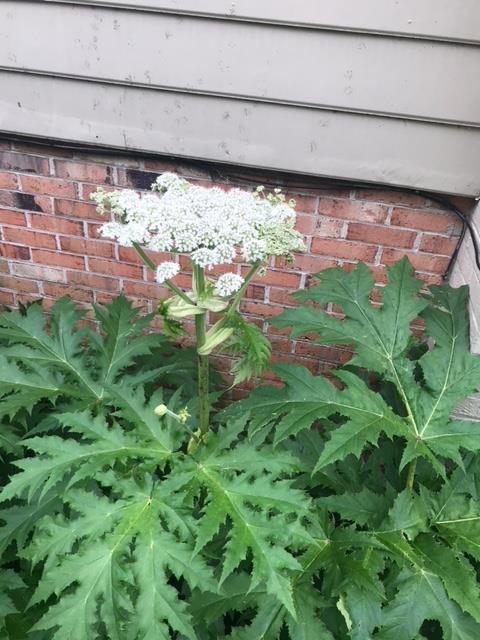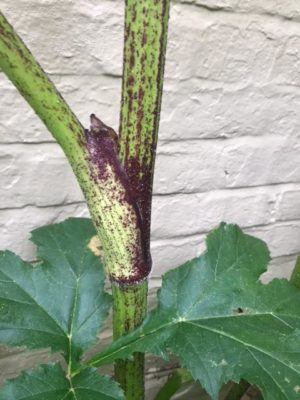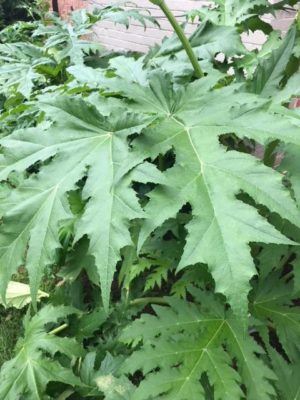Watch Out, Plant Ladies and Hikers: This Weed Causes Severe Burns Upon Contact
On June 12, researchers at Massey Herbarium at Virginia Tech identified giant hogweed in Virginia for the first time. The flowering plant, traditionally found in the Northeast, oozes sap that causes severe burns. In less than a week, 30 plants have been reported, according to the Herbarium's Facebook page.

Though new to Virginia, giant hogweed grows in states like New York, Pennsylvania, Ohio, Maryland, Oregon, Washington, Michigan, Vermont, New Hampshire, and Maine, CBS reports. So if you call any of those locations home (or a vacation destination), it can't hurt to commit a few distinguishing features of the plant to memory.
According to Jordan Metzgar, PhD, curator of the Massey Herbarium, identifying this particular species presents a special challenge since it has a nearly identical twin that's completely harmless. "Just based on numbers, if you find a big plant with white flowers that you think is giant hogweed, there’s a pretty decent chance it’s cow parsnips," Dr. Metzgar tells me.


To make the distinction, Dr. Metzgar says to zero in on the plant's stems and leaves. "The stems [of the giant hogweed] are covered with more coarse white hairs and have a lot of purple spots. The cow parsnips usually have more green stems and have finer, softer white hairs," he explains. Second, while the giant hogweed's leaves will be about five feet wide and incised, the leaves of its harmless doppelgänger are about half as wide. If you think you may have crossed paths with giant hogweed, do your fellow hikers a solid and make sure to report it as an invasive species to your local government ASAP. (You can also check out other noxious plants by state.)
If you do get exposed to giant hogweed's sap, NYC-based dermatologist Dendy Engelman, MD, says your first move should be to thoroughly rinse the infected areas. "It is crucial to irrigate the skin and/or eye immediately in order to eliminate the plant resin from the area of contact," she tells me. Next, seek medical help. "Topical and oral corticosteroids can be prescribed in order to limit the plant's harmful effects," Dr. Engelman suggests.

{{post.sponsorText}}
Though some outlets have reported that the giant hogweed's sap can cause third-degree burns, Dr. Engelman says that the pictured burns are more suggestive of second degree. Either way, make sure you get some H2O on the affected area to flush out that sap—stat. And while we're talking about important information to know when hiking, here's a list of must-haves to bring in order to stay safe and comfortable.
Now that you're in the know about this scary weed, here are a couple Pinterest-approved (and totally harmless—promise) plants to keep in your home. And here's a nontoxic way to get rid of creepy-crawlies in your indoor garden.
Loading More Posts...